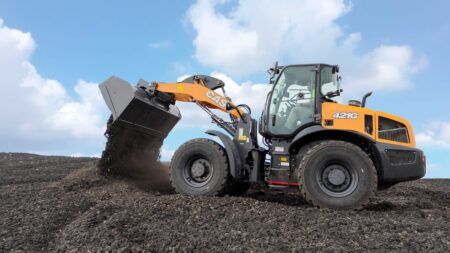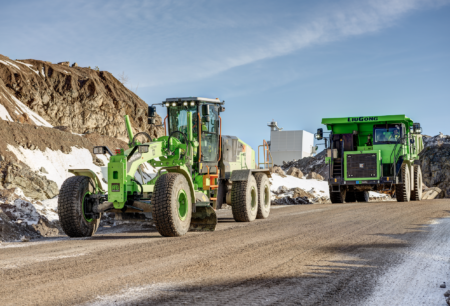CECE (Committee for European Construction Equipment) president Bernd Holz addressed nearly two hundred industry leaders at the organization’s annual congress on October 6 in Prague, Czech Republic, and said the industry must embrace and lead the digital revolution.
“We can only be competitive long-term, sustainably, if we make sure we are the best,” said Holz. “The European construction equipment industry is an example of technology leadership. Increasingly, our machines are ‘digitised’ and there is no escape from that. We must, and we are, embracing it. In fact, Europe as a whole must strive to be an engineering and digital powerhouse as well. It’s the right approach for our societies and economies going forward.”
The main theme of this year’s congress was ‘Industry in Transformation Drivers of Success’. The two-day program featured dozens of speakers and explored a multitude of relevant trends, from the transformational forces in the Central and Eastern European region, to the wave of digitization currently enveloping industry, to the global economic outlook, and the latest technical developments in the field of electrification as well as in the organization of the construction site of the future.
The CECE Congress 2016 was hosted by the Czech national association CECE member, SVSS, and was made possible with the special support of Doosan Bobcat and Ammann, which both maintain substantial production facilities in the country.
Holz, who leads the Ammann Hennef factory in Germany and manages the Northern European Sales region for the road construction equipment producer, also reflected on the daily challenges of manufacturing in Europe: “As manufacturers, we are determined to serve our customers, regardless of the regulatory burden or the economic constraints we are confronted with.
“The sector has used the last decade to make its production leaner. We feel we are well-placed to compete with each other and the rest of the world. We are confident we can increase our market share world-wide. And we are transforming our business models, becoming more service- and customer-oriented than ever before.”
Industry confidence is supported by the performance of the European market, where a stable development at high levels in Northern and Western Europe underpins a continuing yet slowing recovery in Southern Europe, and fairly weak growth in Central and Eastern Europe.
“Construction equipment sales in Europe recorded sound double-digit growth in the first half of 2016 compared with the same period in 2015”, said Holz. “The pick-up in demand extended to all construction equipment sub-sectors, with building construction equipment taking the lead, and to almost all markets in Europe.”
Despite the strong demand in the first half of the year, the industry sentiment looking forward is more subdued. The CECE business climate index was back at positive levels in September, having digested a steep dip in July following the Brexit vote, and after eight months of gradual improvement since the autumn of 2015. Concrete equipment manufacturers are currently the most optimistic sub-group within the CECE Barometer, while road equipment manufacturers are least optimistic about growth. Demand from the mining sector continues to be very weak, which has a restraining effect also on construction equipment sales.
“Provided that the general conditions within the sector and its customer industries do not change substantially in the coming months, CECE expects full-year growth of the European market of between 5% and 10%,” Holz said.
October 7, 2016




